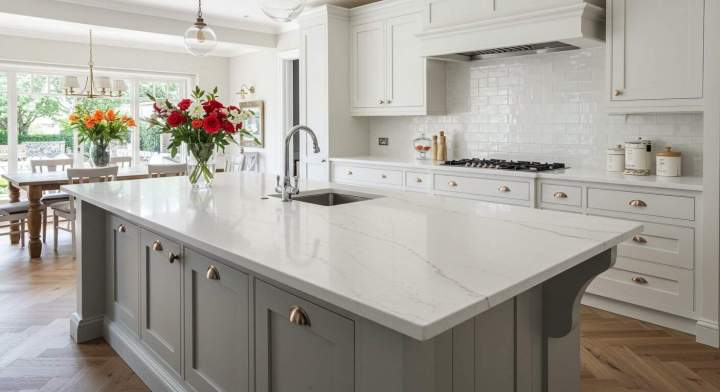Common Mistakes to Avoid When Installing Quartzite Countertops
Quartzite Admin / April 14, 2025

Misidentifying Quartzite
One of the most frequent mistakes is confusing quartzite with other stone types, particularly marble or quartz. While quartzite and quartz sound similar, they are completely different materials. Quartzite is a natural stone formed from sandstone and fused by heat and pressure, while quartz is an engineered product.
Many showrooms mistakenly label dolomitic marble as quartzite due to its similar appearance. However, dolomitic marble is softer and more prone to etching and scratching. Always ask for a certified test of the stone’s composition, or work with a trusted supplier who understands the difference.
Incorrect Cutting Techniques
Quartzite is extremely hard—sometimes even harder than granite. This density makes it ideal for countertops but challenging to cut and shape. Using improper tools can damage the stone, result in uneven edges, or create hairline fractures that worsen over time.
Professional installers should use diamond-tipped blades and plenty of water to cool the blade during cutting. It’s also crucial to avoid rushing the cutting process, as slow and steady passes ensure a smoother, more precise finish.
Skipping Professional Installation
Quartzite is not a DIY-friendly material. Because of its weight, hardness, and the need for specialized equipment, it should always be installed by professionals with experience in natural stone. Improper installation can lead to cracking, poor leveling, or insufficient support for the slab.
Hiring a licensed contractor who has worked with quartzite ensures the countertop is installed correctly the first time, preventing costly repairs or replacements down the line.
Not Preparing the Cabinets Properly
Your base cabinets must be strong and level before installing quartzite countertops. Due to the material’s weight, even slight unevenness can cause stress on the stone, leading to cracks or shifting over time.
Before installation, make sure that cabinets are:
- Properly secured to the wall and floor.
- Reinforced to support the stone’s weight.
- Checked for levelness from end to end.
Adding plywood underneath the countertop can provide extra support and reduce the risk of structural issues.
Improper Sealing or No Sealing at All
Although quartzite is more resistant to staining than marble, it is still a porous natural stone. Failing to seal the surface—or using the wrong type of sealer—can result in permanent stains from oils, wine, and acidic substances.
Choose a high-quality penetrating sealer designed for quartzite and apply it before use. Depending on how heavily the kitchen is used, resealing should be done every 6 to 12 months. Always follow the manufacturer’s instructions for best results.
Overlooking Edge Profiles
Edge design is often an afterthought, but it plays a crucial role in the countertop’s final appearance and function. Some intricate edge profiles may not be suitable for quartzite because of the stone’s hardness and potential for chipping.
Simple, rounded edges such as eased, bullnose, or beveled edges tend to work best with quartzite. They not only enhance the natural elegance of the stone but also reduce the risk of damage during use.
Quartzite countertops can transform your kitchen with their timeless appeal and robust performance, but only when installed correctly.
By avoiding these common mistakes, you’ll ensure your investment in quartzite brings beauty, function, and durability to your home for years to come.